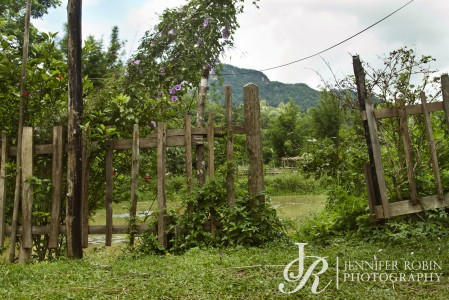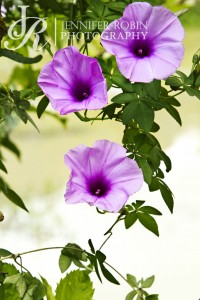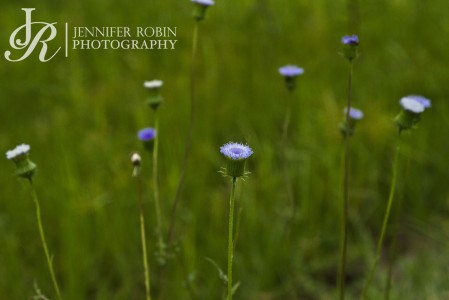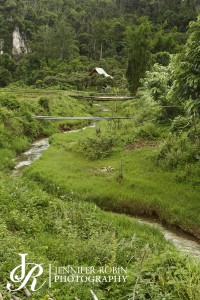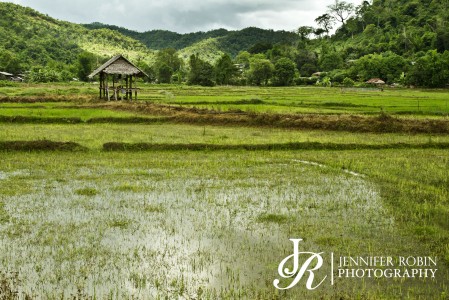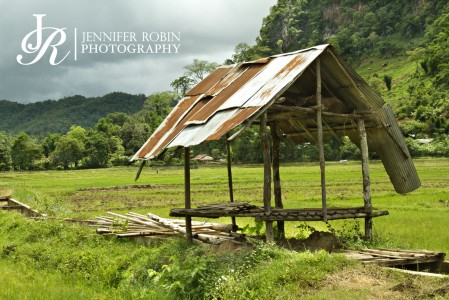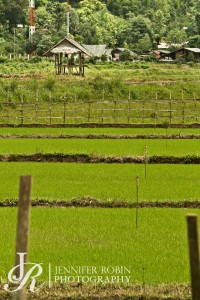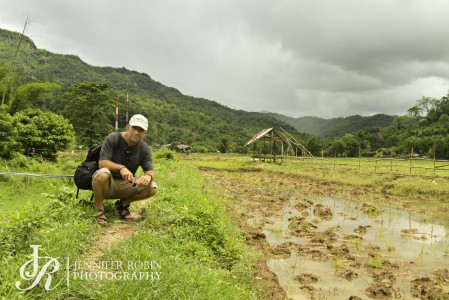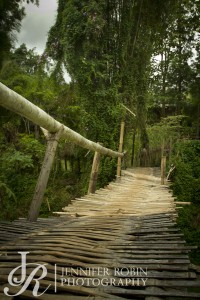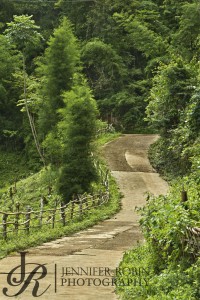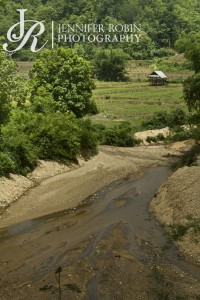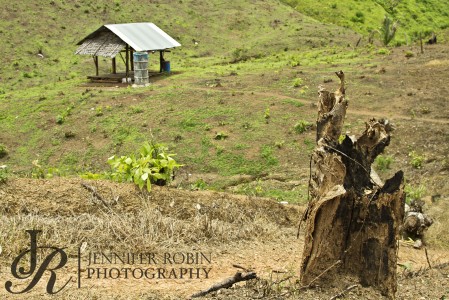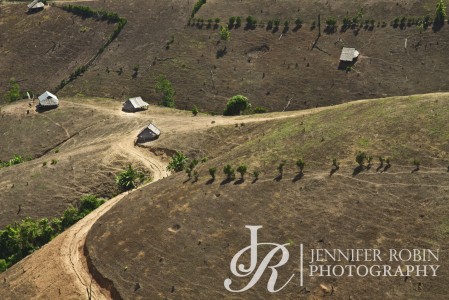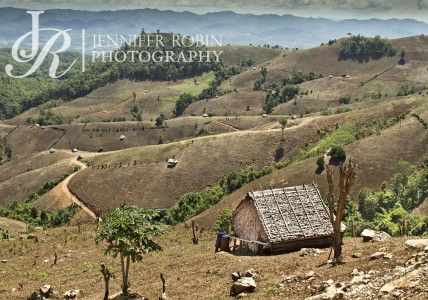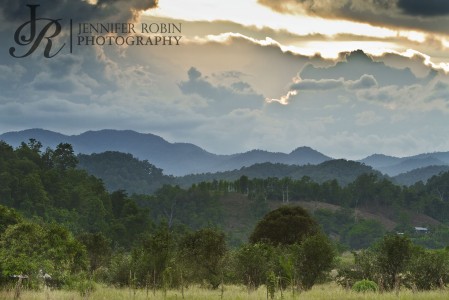Ok…I am going to divulge the name of the town we found in Mae Hong Son Province…the one that we were thinking to keep secret so as to prevent tourists from Germany and Iowa showing up and turning it into another tourist fuck story.
 The name of the place is Mae La Noi. It’s about thirty kilometers north of Mae Sariang on Highway 108.
The name of the place is Mae La Noi. It’s about thirty kilometers north of Mae Sariang on Highway 108.
We headed here after disappointment with Mae Sariang, a place that has been corrupted by the tourist trade.
Mae La Noi is small. Almost no one speaks a lick of English, so a phrase book is essential. Folks are generally nice. Prices are good.
We stayed at the Hern Tai Resort. It is not really a resort, but it is a nice place. If the guest book is any indication, it’s not frequented by Westerners. (You can read about Hern Tai Resort by clicking here.)
There’s not a whole bunch to do around Mae La Noi, which probably explains it’s insulation from tourism. There’s a cave nearby in a national park, neither of which is exciting. There’s a Wat (temple) to the north that’s new and gaudy; but unless your looking for a place to launch a televangelist crusade, it’s not that impressive. There’s a hill tribe village (Huay Hom) about thirty kilometers to the east that specializes in coffee, but that was all-but-abandoned when we motorbiked there. There’s just not that much in the way of sights.
But Mae La Noi is a quiet town away from the tourist tracks, with the opportunity to work on some interaction with locals and expand your Thai vocabulary. There is much goodness in this.
Oh, and there is Pig Town…at least that’s what we call it.
Pig Town is a village on the way to Huay Hom. We drove through the town on our motorbike, and didn’t see a single human being until the very, very far end of the town But, what we did see was a boat-load of pigs. It was like riding into a Twilight Zone episode: “You have found yourself in a place without people…a place of swine…you have entered…the Twilight Zone…”
There is a restaurant at the northern end of Mae La Noi, just north of and on the same road as the police station. It may be the only true restaurant in Mae La Noi. It’s run by a woman named King Noi. She cooked us some great vegetarian stuff, and along with another woman at the joint expanded our Thai vocabulary. She also introduced us to unripened mango spears dipped in a mix of salt, sugar, and pepper that is great (read about it by clicking here).
King Noi is married to a police officer in the town. She is a super fast cook that cranks out amazing stuff in record time. We spent an evening drinking beer with her. She can drink some beer.
Which brings me to beer drinking customs…
With beer, we keep getting offered glasses that have been half-filled with water and then frozen. Thais pour beer over these custom ice cubes. The beer purist in me rebels at the practice, but the local beers aren’t exactly high-end microbrews, and lend themselves to the watering down.
I still prefer a regular mug, though.
 Another place we ate a couple of times is a roadside food stall on the main highway, in the strip of stalls by the bus stop. This stall is the last one on the north end, about 50 yards from the bus stop. We don’t know its name. The food was pretty good, and we managed to convey the idea of vegan without much difficulty. (You can hear a clip of the sounds of this place by clicking here.)
Another place we ate a couple of times is a roadside food stall on the main highway, in the strip of stalls by the bus stop. This stall is the last one on the north end, about 50 yards from the bus stop. We don’t know its name. The food was pretty good, and we managed to convey the idea of vegan without much difficulty. (You can hear a clip of the sounds of this place by clicking here.)
After three full days and four nights in Mae La Noi, we took a bus to Mae Hong Son.
As usual, the bus driver went as fast as possible. Thai bus drivers would be a good recruiting ground for NASCAR.
Equally fast is the loading and unloading of a bus. It takes mere seconds to off-load and on-load passengers, baggage, produce, and packages. There is a driver that drives, and a crew chief of sorts that handles getting passengers and cargo on and off the bus. The crew chiefs will tell the driver to hit it while they are still closing the outside cargo doors, and then jump on while the bus is underway.
Oh…by the way…any of you tourists go to Mae La Noi and ruin it…
Well, let’s just say that I know where you live.
Back to the trip to Mae Hong Son…
We arrived in Mae Hong Son at 3:30pm, after a three-and-a-half hour bus ride. We took a tuk-tuk to our first choice for accommodations, the Sang Tong Huts, which is a Lonely Planet “Our Pick” in the mid-range. Well, our impressions of this place are decidedly negative. The male owner or manager was unpleasant, and unwilling to negotiate his high prices despite almost all his bungalows being vacant We looked at four or five of the bungalows, and they were way over-priced for what they were (open bungalows with free bug access and no air conditioning, with rates on par with an upper-end resort hotel), and the several dogs on the grounds kept no-kidding fighting each other (unique to the canine behavior we have seen at all other places; and not an indicator of joy and harmony at this establishment). The place just had an overall negative feel, and I didn’t want to give this guy a penny of our money.
We took the same tuk-tuk to another option, the Fern Resort. This is a no-kidding resort, properly resort-located seven kilometers south of town, forcing you to use more over-priced resort offerings than you otherwise would. It has a pool. It has nicely done bungalows. It has manicured grounds. It claims to be green and eco-friendly and community conscious – all that buzzword stuff to justify higher prices. (You can read about Fern Resort by clicking here.)
So, we got our tourist on…but it’s only a few dollars more in cost than that bastard at Sang Tong Huts wanted to charge for a bug-ridden hut, so I am OK with it.
We decided to embrace our tourist binge…jump in with both feet…and have a spa day in Mae Hong Son.
That’s right…a spa day. Anyone have a problem with that?
Mae Hong Son boasts a mud spa north of town. A team of geologists is reported to have found it a few decades ago. (Why is it always a team of geologists, or a team of scientists?) It advertises mud treatments, mineral baths, and massages. Sounded like a spa day kinda place.
Motorbike in hand, we rode the sixteen kilometers to the spa, getting lost a bit in the way, which offered the chance to struggle with Thai for directions from the locals.
At the mud spa, we were told that the person or persons who do massages were unavailable, so that was off the menu. The full spa treatment cost almost a thousand baht per person, which made us gag. So, we opted for facials and a dip in the mineral pool.
The facials took about an hour, I reckon. I have no basis for comparison, but Jen thought they were lacking in that you really didn’t get a facial massage. Nonetheless, she thought her skin felt smoother afterwards.
As for me, my beard interfered with the treatment. I probably absorbed three persons worth the mud into my whiskers.
The mineral pool was just that – a swimming pool of hot mineral water, with a concrete deck and chairs surrounding it.
Overall, the mud spa was overpriced and lacking. Like I discuss in the post on Fern Thai Resort (click here), things in Thailand become a disappointment when they try to be Western and cease being Thai. The same comments apply to the mud spa, which caters to tourists, tries to be a Western spa, charges heady prices by Thai standards, but then gives you bug-ridden changing rooms and substandard service on a Western staple (in this case, the facial).
New, but related, topic…
My sense of money is becoming distorted. I still translate baht to US dollars, but am thinking more and more in terms of baht. Take the spa example…It cost 720 baht for both of us to have facials and spend an hour in the mineral pool. 720 baht is about $24 US. Back in the States, I’d think nothing about spending 24 bucks to give my girl a little spa time. But 720 baht? That’s highway robbery in a place where I can rent a nice, apartment-sized bungalow for that price; and still have change for a few beers.
By the way, we were the only customers at the mud spa.
We biked back to Mae Hong Son and had lunch at Ban Phleng at the south end of town. (Click here to read about Ban Phleng.)
 From there, we headed south and west of town to locate an elephant camp indicated on a map we had found of the area. This took a while, as there was no camp where indicated, and one person would say it was two kilometers over there, and then someone there would indicate it was two kilometers the other direction. All this was a test if our limited Thai vocabulary, and eventually revealed that the map was completely inaccurate. The nearest thing along the lines of an elephant camp was farther west, toward a long-neck Karen village.
From there, we headed south and west of town to locate an elephant camp indicated on a map we had found of the area. This took a while, as there was no camp where indicated, and one person would say it was two kilometers over there, and then someone there would indicate it was two kilometers the other direction. All this was a test if our limited Thai vocabulary, and eventually revealed that the map was completely inaccurate. The nearest thing along the lines of an elephant camp was farther west, toward a long-neck Karen village.
So, off we went…riding on winding, narrow roads through wooded and hilly countryside.
We eventually stumbled onto a single elephant being used to give rides to tourists, with a couple of white guys sitting on a bench, a Thai handler on the elephant, and another Thai guy doing a lot of nothing.
Jen took some pictures, but it was not a pleasant experience. The handler was somewhat free with his mahout tool (a handler’s tool that is something like a long hammer handle, with a curved metal spike on the business end). When the elephant wasn’t responding quickly enough, he would rap the elephant’s head with the butt of the handle to get compliance. The elephant was very interested in Jen and me, which only made the handler’s conduct more painful to watch.
We left.
Elephants shouldn’t be amusement park rides.
From here, we continued toward the long-neck Karen village; and that’s when it happened…”The Motorcycle Accident.”
You see, there was a series of shallow stream crossings in the roadway. These were dips of a few feet downward into the stream bed, where the water was a couple inches deep. We had successfully negotiated several of these crossings, and were in the middle of another crossing, when “The Motorcycle Accident” took place.
Now, I would call it “The Moped Laydown,” but Jen named it “The Motorcycle Accident.” We were going at a crawl – maybe one, maybe two miles an  hour. The motorbike was a moped thing that two people can toss into the back of a pickup. We hit a slick, mucky spot in the water crossing that caused the bike to slide and lay down sideways, in slow motion. It was more akin to falling on a parked bike than crashing on a motorcycle.
hour. The motorbike was a moped thing that two people can toss into the back of a pickup. We hit a slick, mucky spot in the water crossing that caused the bike to slide and lay down sideways, in slow motion. It was more akin to falling on a parked bike than crashing on a motorcycle.
But Jen calls it “The Motorcycle Accident.”
More precisely, it is the motorcycle accident that occurred in the jungles of northern Thailand, in the middle of a raging stream, as we were racing toward a tribal village, having just escaped from an angry and charging elephant.
Jen got a scratch on her left leg and a bruise – all inexplicably on the opposite side of the bike’s fall – and I received a minor scrape on my elbow.
After the laydown – or “crash,” if you prefer – a guy showed up on his own motorbike and asked if we were looking for the long-necks. We followed him to the edge of town, where his compatriot presented us with an English-language flyer explaining the 250 baht fee they would collect on behalf of the village for our visit, and how it was totally sanctioned by the Thailand tourism authority.
Yeah…sure…I believe that.
We turned around and left, not wanting to play along with the “gouge the gringo” and “exploit the hill tribes” bullshit.
So, impressions of Mae Hong Son, admittedly based upon a very short stop…
It has been corrupted by tourism; maybe even ruined by it. There are more white people here than elsewhere to the south in Mae Hong Son. There is more written and spoken English (hotel staff, restaurant staffs, and the motorbike rental agent all spoke passable English). There is a hotel that warrants the title “resort.” It is pricey.
Perhaps indicative was the tuk-tuk driver we used when we first arrived. The fare was given as 200 baht before we loaded (already very expensive), and when we got to the hotel he tried to squeeze me for more money. That is something we have not seen elsewhere.
But, then again, a roadside shop still charged the normal 40 baht for a large Singha beer. So, maybe not all is ruined.
The next morning, we turned in the motorbike and snagged a minibus to Soppong, some 60 kilometers farther on the main highway through Mae Hong Son Province.
The minibus is yet another form of bus in Thailand. There is the greyhound-style bus (air conditioned and not air conditioned). There is the pickup with benches mounted. There is the decrepit van without air conditioning. And then there is the minibus…a twelve-plus-passenger van, air conditioned, well-maintained, clean and nice. This is the VIP mode of transport, and for that you pay a premium – about three times the per-kilometer cost of a basic greyhound-style bus.
The driver of this minibus was very anal about his vehicle. He interrogated each passenger about liquids in their luggage, and forced them to either remove the containers or encase the luggage in doubled garbage bags. He distributed throw-up bags to anyone who even hinted of motion sickness.
The throw-up bags are probably a good idea. As usual, Jen and I were given seats in the back of the bus, which put us next to a young monk who was obviously struggling with car sickness. He was deep breathing and gagging throughout the trip, and kept sniffing something in a plastic bottle to ward off a full-on chucking. Thankfully, the throw-up bag remained empty.
Ninety minutes later we arrived in Soppong and dismounted the minibus.
 Soppong is a tiny town that straddles the two-lane highway running through it and the rest of Mae Hong Son Province. It’s like a town in an old Western movie: small road through the middle, stores and restaurants and saloons and hotels one-deep on either side, and nothing else. The town proper is only about 800 meters long. It’s a one-horse town if there ever was one.
Soppong is a tiny town that straddles the two-lane highway running through it and the rest of Mae Hong Son Province. It’s like a town in an old Western movie: small road through the middle, stores and restaurants and saloons and hotels one-deep on either side, and nothing else. The town proper is only about 800 meters long. It’s a one-horse town if there ever was one.
But there are several hotels/inns catering to Western tourists – more than the per capita rate of other places we’ve visited. In fact, if all the hotels/inns were filled, the population of the town would likely double.
What’s the draw of Soppong? From what we have read, the draw is caves and treks to tribal areas that participate in home-stay programs.
But this was the off-season. We saw five other Westerners in a forty-eight hour period, two of which were just waiting for a bus ride.
There wasn’t much of a warm feeling from folks in Soppong. It felt like we were being tolerated, which is strange from a place that is obviously geared toward tourism, and that during the tourist season must be booming for it’s size. Indicative of the anti-tourist feel was the lack of motorbike rental shops. We were told that there had been several rental shops in earlier times, but that all had closed due to problems with renting to tourists. Something bad must have happened.
Soppong feels like a drug addict that hates her drug of choice.
Then again, maybe it just sucks to be a tiny town with a highway running right through the middle. The other small Thai towns we have stayed in were off the highway.
When in Soppong, we stayed at the Little Eden Guesthouse (click here to read about it). We ate at our hotel restaurant, at the restaurant in the Soppong River Inn (click here to read about it), and at The Border Pub and Restaurant (click here to read about it).
Some observations on restaurants in Thailand…
Observation Number One: They are big on playing classic American soft rock of the ’70s and early ’80s – stuff like The Carpenters, Bread, Harry Chapin, Fleetwood Mac, and Carly Simon – that they only turn on when a Western customer walks in the door. Unfortunately, although we both wish they would not play any music at all, we end up singing along in sarcastic parody of these get-stuck-in-your-head-so-you-know-all-the-lyrics-decades-later tunes. This, I imagine, only reinforces the Thai belief that we want to hear this stuff every moment of the day.
Observation Number Two: The one exception to Observation Number One is Thai soap operas. If a favorite Thai soap opera is playing on the restaurant television, then you will be listening to angry Thai actors yell at each other, but not to classic soft rock.
Observation Number Three: Most Thai restaurants use rolls of toilet paper, or some other toilet paper type product, as napkins. Strangely enough, it can be hard to get toilet paper in a hotel room. The solution is to swipe a roll from the restaurant table.
By the way, most of the restaurants in Soppong used real napkins, which makes it upscale in at least one area.
Which leads us back to the stay in Soppong…
We motorbiked from Soppong to the village of Mae La-Na, which is ten kilometers west of town, and then some six kilometers north. It’s in the middle  of a small, very scenic valley. The people here are a bit more warm than those in Soppong, although it appears some tourism reaches them due to the nearby caves. This is evidenced by the cave and town signs that are tourist-friendly, and by ads for homestay programs.
of a small, very scenic valley. The people here are a bit more warm than those in Soppong, although it appears some tourism reaches them due to the nearby caves. This is evidenced by the cave and town signs that are tourist-friendly, and by ads for homestay programs.
There is what appears to be an OK hotel operation in Mae La-Na, the Maelana Garden Home. We took a look at some bungalows, thinking we might stay in Mae La-Na a couple of nights. Unfortunately, the one bungalow that looked interesting – a larger and more modern affair than the remaining A-frames – was taken.
We rode around looking for the entrance to the Mae La-Na cave, but struck out. We found the place where local guides congregate in the tourist season, but this was the off season and there were no guides to be had.
So, we headed back to Soppong, had lunch, and then returned to the hotel.
The next day, we took another fancy-pants minibus, this time to Pai, where we thought we’d use good internet access to catch up on our work. Our minibus trends continued, with seats in the back of the bus, next to a car-sickness candidate. This time it wasn’t a monk, but a girl who looked and sounded like she threw up into her mouth a time or two. There’s nothing like the sound of gagging to enhance a roller-coaster-like sprint through the winding, mountainous roads of northwestern Thailand.
An observation on Thai bus schedules…There are no discernible schedules, outside the major bus stations. You can ask your hotel desk, you can ask a restaurant person nearby, you can ask the owner of a food stall who watches the buses come and go each day, you can ask someone waiting for the same bus as you, and you will get four different answers…and they will all be wrong. No matter what, you end up sitting at the bus stop waiting and waiting for a bus that will only stop for a few seconds before it takes off and leaves you waiting some more.
Pai is to Thailand what Lahaina is to Hawaii. It’s tourist central. I was here two years ago at this same time of year, and it was pretty dead; although it was also pretty obvious that the town was built around the tourist trade. Dead is not what it is today. There are tons of Westerners on the streets; and if this is the off-season, then the on-season must be insane. There are also Arab tourists and Muslim locals, which I didn’t see two years ago. The tourist pool has apparently gotten wider and deeper.
How can things change so much in two years? Maybe 2009 was an anomaly; a reflection of the global economy. Maybe what we are seeing today is an indicator of an improving economy. I don’t know.
What I do know is that Pai is not a reflection of the rest of Thailand.
We’ll get our work done, take a look around, and move on.

